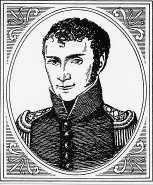| VIAS Encyclopedia provides a collection of tables and definitions commonly needed in science and engineering. |

|

Home  Science History Science History  Biographies Biographies  Johann Wilhelm Ritter Johann Wilhelm Ritter |
|||
| See also: [], [] | |||






|
|||
Johann Wilhelm Ritter (1776 - 1810)
Johann William Ritter (born 1776), was Silesian, and trained as a pharmacist. He recognized, among other things, that galvanic electric circuits are also caused by a chemical reaction between the system components used, and that the electricity produced by a simple galvanic chain is identical to that produced by a Volta column. He discovered the electrical accumulator, the dry battery, and the presence of ultraviolet radiation in the solar spectrum. Since the beginning of his galvanic investigations, Ritter was an advocate of the romantic ideal that the reconciliation of the spirit and material nature could be identified with God, through the metaphysical action principle. In 1805, Ritter moved to Munich, where he worked as an academic in the Royal Bavarian Academy of Sciences. He gradually turned his back on recognized science, concerning himself increasingly with esoteric investigations. He followed this line of research in conjunction with Campettis, who was competent in the area of utilizing magical methods to seek out sources of water and ore. Later on, he began to research plants, drawing upon the technique of Galvani's frog investigations. Ritter had hoped that, due to his studies of the occult, he would be capable of constructing a system of physics and nature superior to that of his work on electricity. He descended into disrepute within the circle of secular scientists, plunging him into poverty. Before his death, his family was taken care of by friends. Ritter passed away from tuberculosis in 1810, at the age of 33.
|
|||
Home  Science History Science History  Biographies Biographies  Johann Wilhelm Ritter Johann Wilhelm Ritter |
|||
Last Update: 2007-08-31


